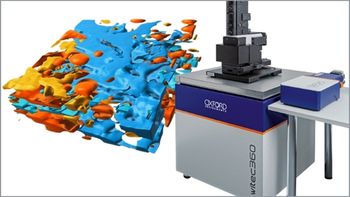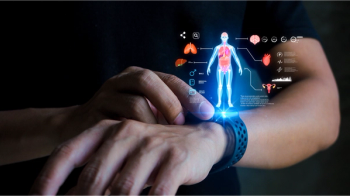
Using Raman to Monitor Osteoporosis Therapy
In a new study, scientists are investigating Raman spectroscopy as a technique for monitoring postmenopausual osteoporosis.
In a recent study published in the Journal of Raman Spectroscopy, scientists J. Renwick Beattie of Causeway Enterprise Agency in Ballycastle, UK and Mark R. Towler of the Missouri University of Science and Technology in Rolla, Missouri used Raman spectroscopy to monitor postmenopausual osteoporosis (1).
Osteoporosis is a disease that weakens bones to the point of brittleness, which can make actions like falling or bending over dangerous. Since bone is living tissue that constantly breaks down and replaces itself, osteoporosis occurs when new bone creation does not keep up with the rate at which old bone is broken down (2). There are multiple ways to treat osteoporosis, one of which involves bisphosphonate-based pharmacological therapy (1). It reduces the risk of fracture, but this process cannot be fully explained by just looking at how bone mineral density is modified. More bone quality aspects that affect fragility must be better understood, as well as methods that can help monitor them.
According to the scientists, factors that influence bone collagen remodeling can also remodel keratin in parallel processes (1). As such, this study involves the comparison of human fingernail clippings from different subjects, some of which are clippings with bone active pharmaceutical intervention, and some without. Using a discriminant model, the scientists were able to identify nails from patients that were treatment-naïve and treated with an area under a 71% curve in the test set. A time series of changes relative to the baseline showed that after 1 year, the treated group’s scores (95 confidence interval 37% to 377% change) were different from the 12-week measurements (-198% to 34%), and scores from untreated subjects (-92% to -674%).
After analyzing the spectral differences and model coefficients, the scientists noticed features that were inverse to ones observed in three previous osteoporosis models; this indicated that treatment was reversing damaged protein structures. These findings provide evidence that bone active medication can systemically influence keratin structures in humans, helping us understand some of the underlying mechanisms. Bisphosphonates can have a direct influence on protein structures, making these effects worth investigating further.
References
(1) Beattie, J. R.; Towler, M. R. Raman Spectroscopy as a Tool for Monitoring Osteoporosis Therapy in Postmenopausal Osteoporosis. J. Raman Spectrosc. 2023, 54 (12), 1399–1407. DOI:
(2) Osteoporosis. Mayo Foundation for Medical Education and Research (MFMER) 2024.
Newsletter
Get essential updates on the latest spectroscopy technologies, regulatory standards, and best practices—subscribe today to Spectroscopy.





